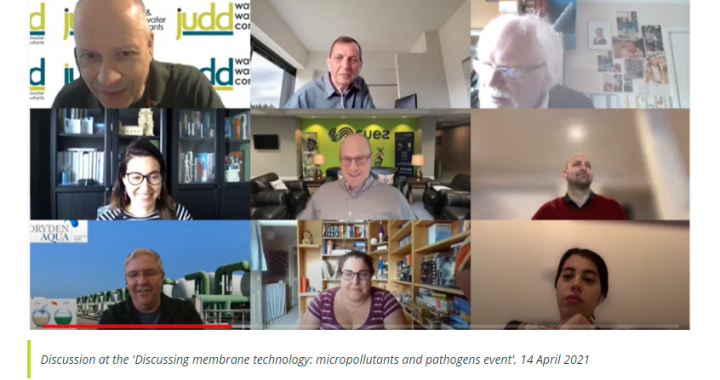Micropollutants derived from manmade chemicals and microplastics or microfibres are destined to become a major challenge for the environment and specifically for the water industry in the 21st century. The issue is serious, pervasive, difficult to address, and will have a very long term impact. Water industry legislators began to contemplate action more than 20 years ago, but so far, little concrete progress has been made. It is one of those issues that has up to now been consigned to the ‘too difficult’ tray!
Simon Judd and I hosted a webinar with an extended Q&A session on the issue of membranes and micropollutants a couple of weeks ago (see The MBR Site | Membrane technology in controlling micropollutants and…). As always in events like this, I learnt interesting things about the subject as I prepared for the event but especially from the thought provoking and insightful contribution of the attendees. Thanks to Simon and Claire at www.Juddwater.com for putting the event together.
The Q&A largely focused on Persistent Mobile Toxic (PMT) substances, ie so-called ‘forever chemicals’ of which PFAS is a major sub-group. An interesting contrast occurred to me. In the late 1980s, a micro-organism that hardly anyone had even heard of suddenly sprang onto the scene, i.e. cryptosporidium. Of course, it has always been with us, but in water supply, it was below the radar. Some high-profile contamination events then occurred at the end of the 1980s and beginning of the 1990s resulting in sickness and even some deaths. Within 5 years, legislation started to emerge mandating its removal and by the late 1990s, membrane plants were being installed throughout the US and UK to ensure its removal. The response was rapid since cryptosporidium had an immediate health impact.
The cryptosporidium issue also caught the attention of corporates in the food and beverage sector and the brewing industry both of which use water as a feedstock. Some of them also followed the lead of municipal suppliers and installed membrane barriers to avoid any possible connection to disease outbreaks.
PMT substances are at the opposite end of the spectrum in many ways. The effects are not fully known, and health impacts are not as immediate. However, studies link these compounds to reduced fertility rates and cancers and they pose a serious long-term threat.
Throughout evolution, humans have responded to short term threats effectively, but unfortunately, we tend to ignore the long-term issues. Impacts which can be addressed in a parliamentary term or at most a generation, tend to be the limit of what galvanizes us in to action. It is this characteristic that has made us slow to address the major environmental issues such as climate change and has prevented any sense of urgency.
As a consequence of manmade micropollutants, water sources are facing a threat that is somewhat analogous to climate change. Although the water industry responded almost immediately to address the problematic micro-organisms of the 1990s, there has been much more ponderous response to the more widespread and difficult problem of PMT substances and microplastics. The new millennium was expected to bring swift action, but it is only now that legislation is starting to emerge. And even then, it is often at the local level or with municipal suppliers themselves that action starts. Government response has tended to be very slow, but some US states and individual suppliers and companies have begun to take action. For example, an RO system is being installed in California specifically for PFAS removal and in Switzerland, activated carbon is being used on several plants to address a list of 20 of the most common PFAS contaminants.
The next stage will be duty of care consideration by major users including corporates who use water to make products. These entities may well take action to prevent future liabilities, as they did for the cryptosporidium problem. The longest established PFAS supplier, Du Pont, has earmarked $4bn to cover future lawsuits ands compensation. Users of PFAS products may well have to consider their role in liability issues or take pre-emptive action to control exposure for their consumers.
Legislation has been introduced, or is being considered, to remove the source of these compounds from the environment, but we have already created a problem that will challenge us for more than a century and we are still adding to that problem on a daily basis. The next major challenge for the water industry will be to remove and destroy these contaminants from water sources or in wastewater treatment. While the cryptosporidium problem was easily identified and addressed, the challenge of PMT and microplastics will haunt us for decades. The practitioners in the industry seem to be geared up and in some cases are already out of the gate, but now the legal framework needs to be defined to mandate action. Membranes will undoubtedly play a major role.

